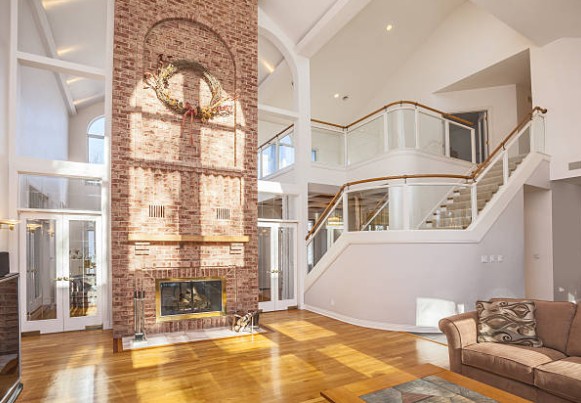When I first became a self-employed painter and decorator, one of the most important questions I had to answer was, “How much should I charge per hour?” It wasn’t just about what I thought my time was worth—it was about understanding the market, factoring in my costs, and building a rate that was fair, profitable, and sustainable.
In this blog, I’ll walk you through what I’ve learned over the years about the self-employed painter and decorator hourly rate, and how I’ve fine-tuned my pricing to make my business work in today’s UK market.
How Much Do Self-Employed Painters and Decorators Earn Per Hour in the UK?
The hourly rate for self-employed painters and decorators in the UK can vary a lot depending on where you work and what type of jobs you take on. From my experience and speaking with others in the trade, the typical hourly rate ranges between £14 and £35 per hour.
In bigger cities like London, hourly rates are higher due to the cost of living, demand for quick turnaround, and the price clients are willing to pay. Outside major cities, the rates tend to be more modest but can still be very profitable if your schedule is full.
Here’s how it usually breaks down:
| Region | Hourly Rate | Day Rate Equivalent |
|---|---|---|
| London | £20 – £35 | £180 – £250 |
| South East | £18 – £30 | £160 – £220 |
| Midlands | £16 – £25 | £140 – £200 |
| North of England | £14 – £22 | £120 – £180 |
| Scotland/Wales | £14 – £20 | £120 – £170 |
A lot of decorators charge by the day rather than the hour, but hourly rates come in handy for smaller jobs or call-outs. I personally use both, depending on what the client needs.
What Is the Average Hourly Rate for Painting and Decorating Work?

If you’re new to the trade or just starting to work for yourself, you might be wondering what counts as “average.” Based on industry surveys, such as those from Checkatrade and Rated People, the average painter and decorator hourly rate in the UK sits around £18 to £25 per hour for interior work.
That said, the rate can fluctuate depending on the type of job:
- Interior painting (walls, ceilings, trims): standard rate applies
- Exterior painting: tends to cost more due to additional prep, weatherproofing, and safety risks
- Wallpapering or specialist finishes: often priced higher due to the skill and precision required
I’ve found that clients are often willing to pay more for neat, reliable, and fast work—so building a good reputation can quickly justify charging the upper end of the scale.
What Factors Influence a Self-employed Painter and Decorator Hourly Rate?
Several things impact how much I can charge. Location is a big one, but there’s more to it than that.
1. Experience and Skill Level
The more experienced I became, the more confident I felt charging higher rates. Clients recognize skill, efficiency, and attention to detail—things that come with time.
2. Job Complexity
Some jobs are straightforward. Others require climbing ladders, stripping wallpaper, repairing walls, or applying specialist finishes like gloss, satinwood, or even spraying. These take more time, effort, and equipment, so I adjust my price accordingly.
3. Who Supplies the Materials
If I supply paint, fillers, brushes, and rollers, I include that cost in my overall quote or price it separately. Some clients prefer to provide their own materials, which lowers their cost but changes my hourly breakdown.
4. Client Type
Private homeowners, landlords, letting agents, and commercial clients all have different expectations and budgets. I’ve learned to tailor my rate depending on who I’m working with and what kind of job it is.
Hourly Rate vs Day Rate: Which Should You Choose?

When I first started out, I only charged by the hour. It helped me understand how long different tasks actually took. But over time, I’ve moved towards quoting per day for most larger projects. It’s simpler for the client and more predictable for me.
That said, hourly rates still work well for:
- Small one-room jobs
- Minor touch-ups
- Urgent call-outs or snagging work
Here’s a comparison I often use to help clients understand the difference:
| Pricing Type | Best For | Pros | Cons |
|---|---|---|---|
| Hourly Rate | Small jobs, repairs | Transparent, good for minor work | May seem slow to clients |
| Day Rate | Full rooms/houses, large jobs | Easier for quoting, more flexible | Less precise for small tasks |
What Are My Monthly Expenses as a Self-Employed Painter?
To make sure I’m not undercharging, I had to sit down and list all my ongoing expenses. Many painters forget that being self-employed means every cost—from petrol to insurance—comes out of your own pocket.
Here’s a look at my typical monthly overheads:
| Expense | Estimated Monthly Cost |
|---|---|
| Fuel and Travel | £80 – £150 |
| Tools & Equipment upkeep | £30 – £60 |
| Public Liability Insurance | £15 – £25 |
| Paint & Materials (stock) | £100+ (depending on jobs) |
| Marketing/Website | £10 – £30 |
| Accountant/Software | £10 – £20 |
These costs must be factored into your hourly rate. Otherwise, you’ll find yourself working hard but struggling to cover your bills.
What Should Be Included in My Hourly Rate?
When I quote my hourly rate to clients, I make sure it covers more than just the hours I’m holding a brush. Here’s what I included:
- Labor: My actual time on site
- Travel: Time and fuel to get to the job
- Tools & Materials: Wear and tear, plus anything I supply
- Overheads: Admin, insurance, marketing, bookkeeping
- Profit: I need a margin that makes running the business worthwhile
I also allow for non-billable time—like writing quotes, chasing invoices, and responding to enquiries. It’s all part of the job but often forgotten when setting a rate.
How Do I Calculate Quotes Based on My Hourly Rate?

If a client wants a quote, I first estimate how many hours (or days) the job will take, then multiply it by my hourly or day rate. But I don’t stop there. I also factor in:
- Surface condition (damaged walls take longer)
- Ceiling height and accessibility
- Drying times and multiple coats
- Client expectations and finish quality
For example, a standard bedroom might take me around 1.5 to 2 days, including prep, two coats, and tidy-up. If I charge £180 per day, that’s £270–£360. I’ll also add material costs if I’m supplying paint or filler.
Do I Need to Register with HMRC and Pay Taxes?
Absolutely. As a self-employed decorator, I registered as a sole trader with HMRC and submit an annual self-assessment tax return. I also pay National Insurance (Class 2 and possibly Class 4) depending on how much I earn.
Some jobs can push me over the VAT threshold (£90,000/year)—if that happens, I’d need to register for VAT too.
The good news? I can claim back a lot of my business expenses to reduce my taxable profit. These include:
- Tools and equipment
- Fuel and vehicle use
- Phone and business software
- Protective clothing
- Advertising
It’s worth using accounting software or a small business accountant to stay on top of this—especially as your workload grows.
Final Thoughts: Setting the Right Hourly Rate as a Self-Employed Painter
In the beginning, I made the mistake of undercharging. I was so focused on getting work that I didn’t realize how little I was actually making. It didn’t take long before I adjusted my prices—and I’ve never looked back.
Your self-employed painter and decorator hourly rate should reflect your skills, your experience, your costs, and your time. If you undercharge, it’s hard to grow. If you overcharge, you risk losing work. The key is finding the sweet spot that keeps you busy, covers your expenses, and leaves you with a fair profit.
So if you’re just starting out, take the time to run the numbers, compare local rates, and don’t be afraid to charge what you’re worth. You’re not just painting walls—you’re building a business.






